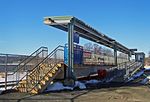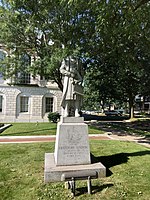Chase Collegiate School
1865 establishments in Connecticut1912 establishments in ConnecticutBuildings and structures in Waterbury, ConnecticutDefunct private schools in ConnecticutEducational institutions established in 1865 ... and 5 more
Educational institutions established in 1912Private elementary schools in ConnecticutPrivate high schools in ConnecticutPrivate middle schools in ConnecticutSchools in New Haven County, Connecticut
Chase Collegiate School was a nonsectarian private day school offering education for children from pre-kindergarten through grade 12. The school was on a 47-acre (190,000 m2) campus in Waterbury, Connecticut. On October 2, 2017, the school announced that it had been purchased by York Education Group, a for-profit entity which owns multiple schools. Due to the COVID-19 pandemic, the school announced its closure on August 13, 2020.As of 2015, the enrollment was 276 students: 61 Lower School (age 3 pre-kindergarten through 5th grade), 75 Middle School (6th through 8th grades), and 140 Upper School (high school).
Excerpt from the Wikipedia article Chase Collegiate School (License: CC BY-SA 3.0, Authors).Chase Collegiate School
Chase Parkway, Waterbury
Geographical coordinates (GPS) Address Phone number Website External links Nearby Places Show on map
Geographical coordinates (GPS)
| Latitude | Longitude |
|---|---|
| N 41.54755 ° | E -73.0664 ° |
Address
Chase Collegiate School
Chase Parkway 565
06708 Waterbury
United States
Open on Google Maps




